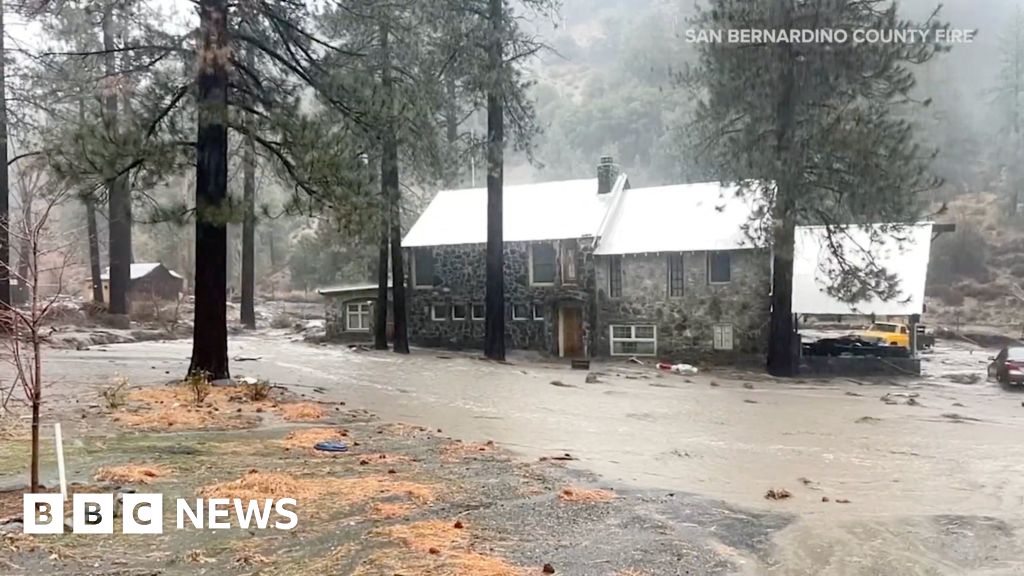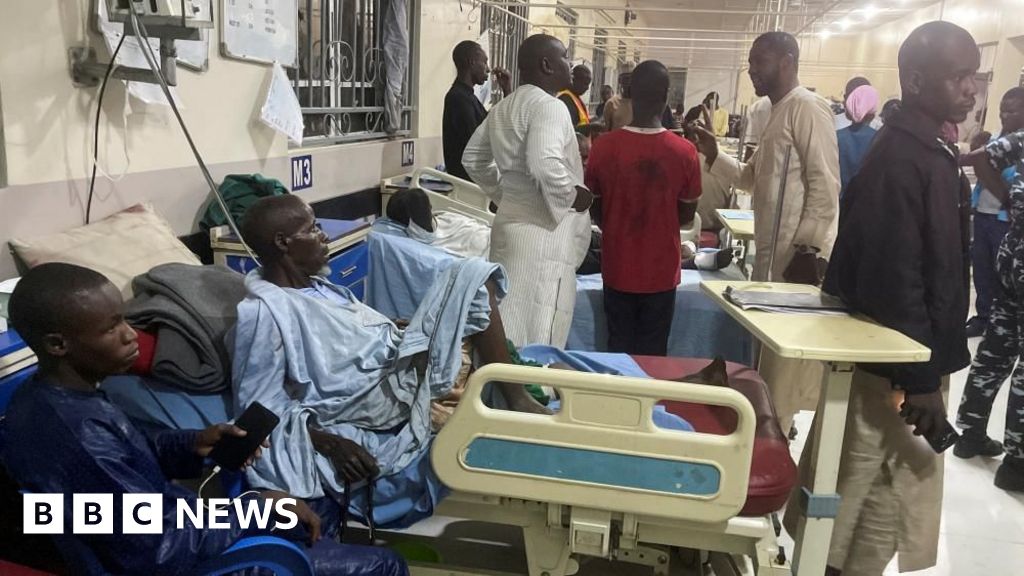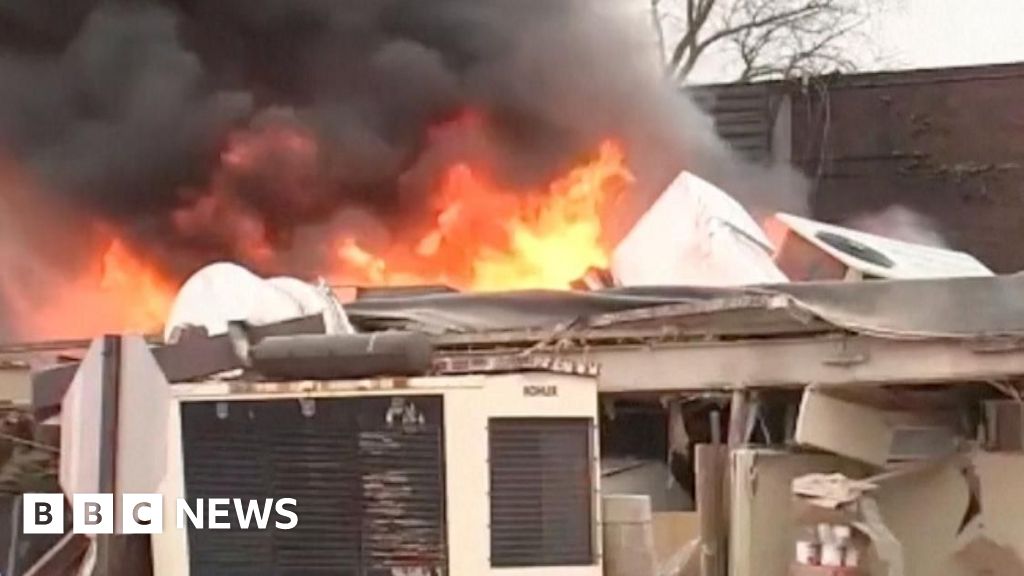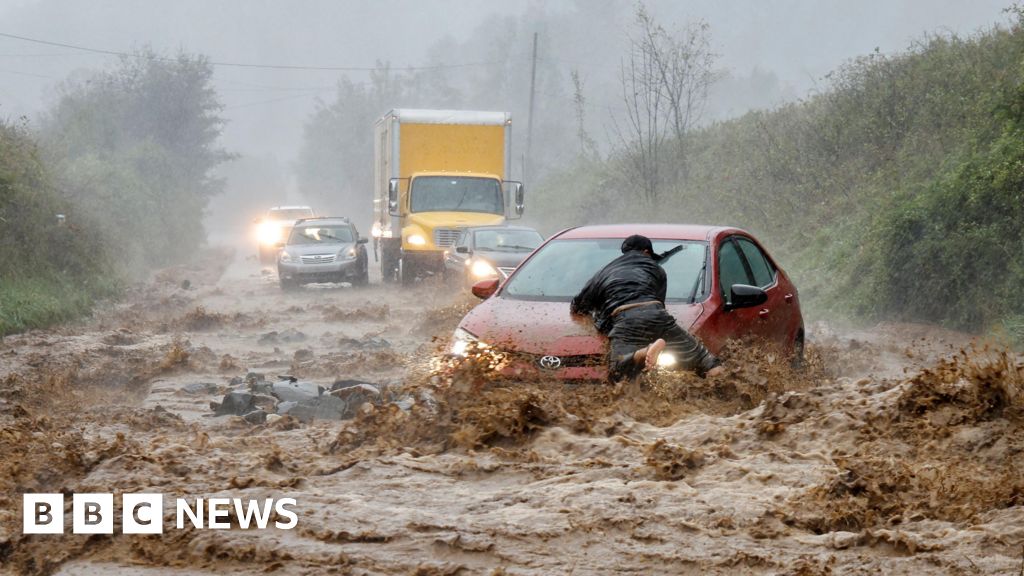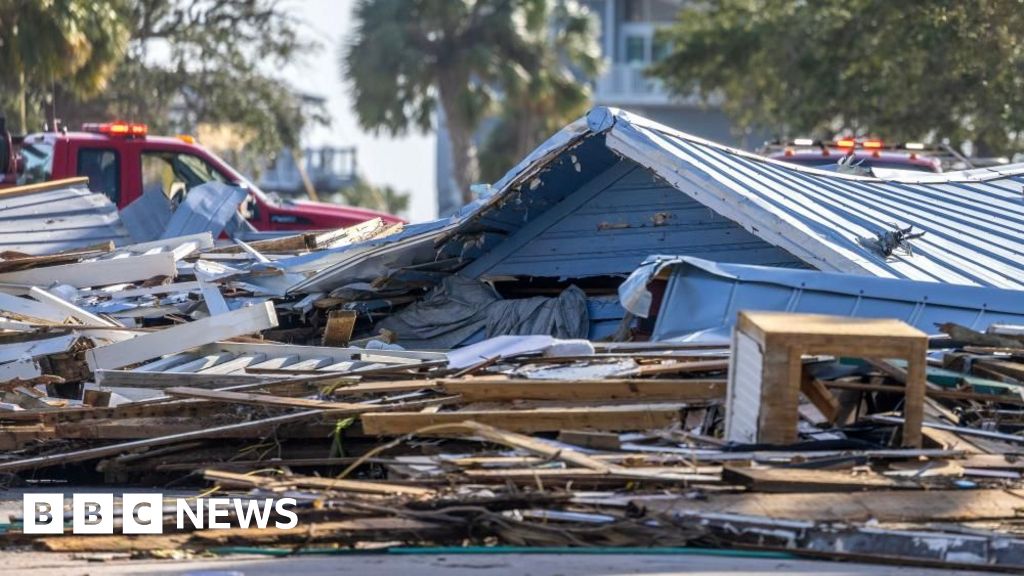At least 43 people have died and millions left without power on Friday as Hurricane Helene roared through the south-eastern US.
It was the most powerful storm on record to hit Florida’s Big Bend and moved north into Georgia and the Carolinas after making landfall overnight on Thursday.
Although Helene has weakened significantly, forecasters warn that high winds, flooding and the threat of tornados would continue.
Roads and houses were submerged on Friday, with one family describing to the BBC News how they had to swim out of their home to safety. Insurers and financial institutions say damage caused by the storm could run into the billions of dollars.
The eye of Helene, which had been a Category Four storm, came ashore on Thursday night.
Helene remained a hurricane for six hours after it made landfall, according to Federal Emergency Management Agency (FEMA).
The National Hurricane Center (NHC) said a storm surge – heightened water levels mostly caused by high winds blowing water towards shore – reached more than 15ft (4.5m) above ground level across parts of the Florida coast.
The NHC said the surge should subside on Friday but that the threat from high winds and flooding would persist, including possible landslides.
Up to 20in (50cm) of rain is still possible in places.
The hurricane is the 14th most powerful to hit the US since records began. At approximately 420 miles (675 km) wide, it is behind only two other hurricanes – Ida in 2017 and Opal in 1996, both of which were 460 miles wide.
Because of its sheer size, the impact of strong winds and heavy rain have been widespread across Florida, Georgia, Tennessee and the Carolinas.
At least eight people have died in Florida since Friday, including at least five people in Pinellas County, the county’s sheriff, Bob Gualtieri said.
Pinellas County includes the city of St Petersburg on Florida’s Gulf Coast.
Florida Governor Ron DeSantis said one person died after a road sign fell on their car and another when a tree fell on a home.
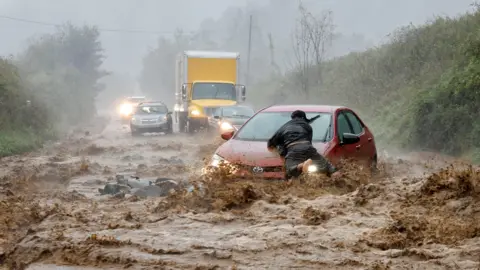 Reuters
ReutersTwo people in Wheeler County in Georgia also died, authorities said, when a suspected tornado picked up and overturned a mobile home.
Georgia Governor Brian Kemp said at least 15 people died in his state, including one first responder. Kemp ordered 1,000 National Guard troops to help rescue efforts.
The Georgia governor said more than 150 roads have been closed, 1,300 traffic signals are out across the state and people are still trapped in buildings.
In South Carolina, at least 17 people were killed, according to CBS News, the BBC’s US partner. Neighbouring North Carolina saw at least two fatalities in the storm, one due to a vehicle collision and another when a tree fell on a home in Charlotte, Governor Roy Cooper said.
And one person was killed in Virginia, the state’s governor, Glenn Youngkin, said at a news conference Friday.
Across the southeast, first responders have been tackling daring rescues, using helicopters, boats and large vehicles to help people stranded in flooded homes. In North Carolina along, more than 100 rescues have taken place, Cooper said.
Two tornados were confirmed in North Carolina by the National Weather Service. One damaged approximately 11 buildings, and left 15 injured. Four people were taken to hospital in “serious” condition, the weather service said.
In Tennessee, 58 patients and staff were left stranded on the roof of a hospital in the city of Erwin on Friday. Swift-moving water from the Nolichucky River prevented boats from being able to conduct rescue operations, and high winds prevented helicopter rescue.
The group was later taken to safety after helicopters from the Tennessee National Guard and the Virginia State Police intervened.
Across the region some four million homes and businesses were without power late Friday, according to tracking site poweroutage.us.
In Pasco County, north of Tampa on Florida’s Gulf coast, 65 people have been rescued, and in Lee County, to the south, many roads are impassable.
Also along the Florida coast, hotel guests were evacuated from a Ramada Inn in Manatee County as the hotel was flooded with water.
And in Suwannee County to the north, authorities reported “extreme destruction”, with trees falling onto homes.
Michael Brennan, the director of the NHC, said damaging winds are forecast to continue hitting Georgia and the Carolinas throughout Friday, especially over the higher terrain of the Southern Appalachians.
Speaking from the White House on Thursday evening, President Joe Biden urged residents to “listen to local officials and follow evacuation warnings”.
In Taylor County, the Sheriff’s department said that people who refused to evacuate should write their names and dates of birth on their arms in permanent ink “so that you can be identified and family notified”.

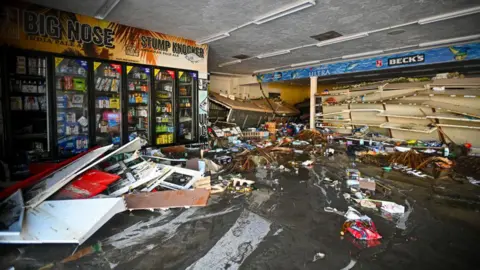 Getty Images
Getty ImagesBriana Gagnier told the BBC how she and her family saw water creeping into their home on Holmes Beach, Florida, and started moving their belongings onto tables and beds before hearing a loud bang.
“My family and I all looked at one another,” she said. “Then water just started pouring in.”
Ms Gagnier said she grabbed her pets, her wallet and some portable chargers and swam out of their home with her family. The water was up to their shoulders.
“We also encourage all communities to please continue to listen to your local officials,” FEMA Deputy Administrator Erik Hooks said Friday. “Just because the storm has passed where you are doesn’t necessarily mean that you’re safe to leave your home.”
Officials also reminded residents the effects of the storm are “not over yet” and urged residents to remain vigilant.
Hurricanes need sea surface temperatures of more than 27C (80F) to fuel them.
With exceptionally warm waters of the Gulf at 30-32C, the sea surface is about two degrees Celsius above normal for the time of year.
Florida’s 220-mile Big Bend coast is where Hurricane Idalia made landfall in 2023. The area was also battered by Hurricane Debby last month.
There could be as many as 25 named storms in 2024, the National Oceanic and Atmospheric Administration (NOAA) warned earlier this year.
Between eight and 13 of those storms could develop into hurricanes and a handful already have including Helene.
More storms could be on the horizon as the official end of hurricane season will not arrive until 30 November, officials warned.


